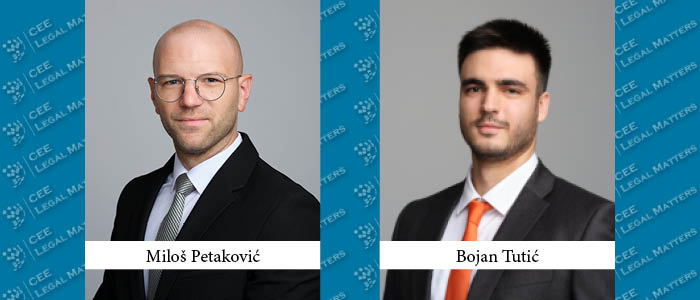Polo shirts are probably more broadly recognized than the sport itself. Unlike t-shirts, polo shirts feature a collar, a sleek design, and a knitted polo player logo on the chest. However, if you’re not fashion-savvy and examine it closely, you’ll notice that this polo player logo varies.
The U.S. Polo Association (USPA) logo depicts two polo players, one with a mallet raised upwards and the other downwards. In contrast, the Polo Ralph Lauren (PRL) logo features a single polo player with a mallet raised upwards. The primary difference lies in the presence or absence of the words “USPA” or “Polo Ralph Lauren” beneath the polo player. You might wonder how such similarity is permitted in trademarks and why these companies haven’t sued each other. They have led to a rich history of legal disputes between them.
Polo 1984
Ralph Lauren, established in 1967, has used the polo player mark since 1972, whereas the U.S. Polo brand launched in 1981. In 1984, the USPA initiated legal action against PRL, seeking a declaration that merchandise with a mounted polo player symbol did not infringe on PRL’s logo. PRL countersued for trademark infringement, claiming the double horse riders’ marks violated their logo. USPA argued that the mark was a generic depiction of a polo player without a specific product association. The court disagreed, finding USPA’s use of the polo player mark and the word “POLO” infringing on PRL’s trademarks. Nonetheless, USPA was permitted to continue using its name and mounted polo player logo, provided it was distinct from PRL’s in content and perspective.
Polo player(s)
PRL retaliated with a lawsuit against USPA and its licensee, Jordache, Ltd., alleging that four logos with double horse riders on clothing infringed on the Ralph Lauren polo player mark. A pivotal element was the prior business negotiation, where PRL had consented to USPA’s use of the double horse rider mark. Despite PRL’s objection, the court admitted evidence of this consent. The jury found the first logo, a solid double horse rider silhouette without lettering, infringed PRL’s trademarks. However, the other three logos (with added lettering or outlined horse riders) were deemed non-infringing.
Fragrances and Eyewear
Unsurprisingly, disputes extended to other products. USPA’s fragrance, in a dark blue package similar to PRL’s earlier Polo Blue fragrance, was found to infringe on PRL’s trademarks. The court determined that USPA’s “confusingly similar” logo with two mounted polo players and their use of “POLO” infringed on PRL’s marks concerning fragrance products. The court noted that, unlike apparel, PRL’s Player logo and POLO trademarks for fragrance products were valid and “extremely strong” and thus were entitled to substantial protection from infringement. The court took this further and claimed that USPA had acted in bad faith by producing a fragrance with the double horsemen logo and the word “POLO,” knowing the product had a high likelihood of confusion. The court issued a permanent injunction against the USPA and dismissed its request for a declaratory judgment disenabling the USPA from using the mark for fragrances. The Second Circuit confirmed that the USPA may use and license its Double Horsemen logo in one industry (apparel). However, it did not necessarily mean it was allowed to use the same marks in a different sector (fragrances), in which RPL was well established.
Similarly, in another case, the court found that USPA’s sale of sunglasses bearing its Double Horsemen logo violated the injunction regarding fragrances and other products. The court granted PRL’s motion to hold USPA in contempt, finding that the plain language of the earlier injunction applied to eyewear. However, the higher-instance court vacated the contempt order and returned the case to the lower courts. This litigation continues to this day.
The court noted the strength of PRL’s fragrance marks and issued a permanent injunction against USPA in this category. The Second Circuit ruled that authorization to use the logo in apparel did not extend to different industries like fragrances, where PRL was established. Similarly, USPA’s sale of sunglasses with the Double Horsemen logo was initially found to be in violation of the injunction but was later remanded for further review.
Western Balkans
In Serbia, both RLP and USPA polo player trademarks are registered. Interestingly, the RPL polo player trademark is registered for class 3, which covers perfumery (makes sense considering the U.S. court decision above). At the same time, the USPA has the double horse riders trademarks registered for clothing, footwear, headwear, retail sales, and online retail store services.
The same goes for Montenegro, although USPA’s double horse riders mark isn’t registered for clothing, footwear, and headwear.
In Bosnia and Herzegovina, the only polo player protected by a trademark is Ralph Lauren’s, and it’s registered for retail sales and online retail store services.
Outro
This rivalry highlights the importance of trademarks in fashion (and commerce in general). Trademarks play a significant role in safeguarding a company’s brand identity, reputation, and market position.
This battle also serves as an important reminder that trademark infringement analysis is market-specific, and the main concern is whether using a mark will likely confuse. Furthermore, one spot may create confusion in one geographical market but not in another. For example, the USPA double horse riders mark can be registered in the USA and Serbia. For instance, in Japan, the Japan Patent Office found that just the word “POLO” may confuse the market and declined USPA’s trademark application for the mark “U.S. Polo Assn.”
In the end, remember that if there is one polo player, it’s Ralph Lauren. If there are two, that’s the U.S. Polo Association, three or more players, and maybe it’s a counterfeit polo shirt.
By Milos Petakovic, Senior Associate, and Bojan Tutic, Associate, Gecic Law
